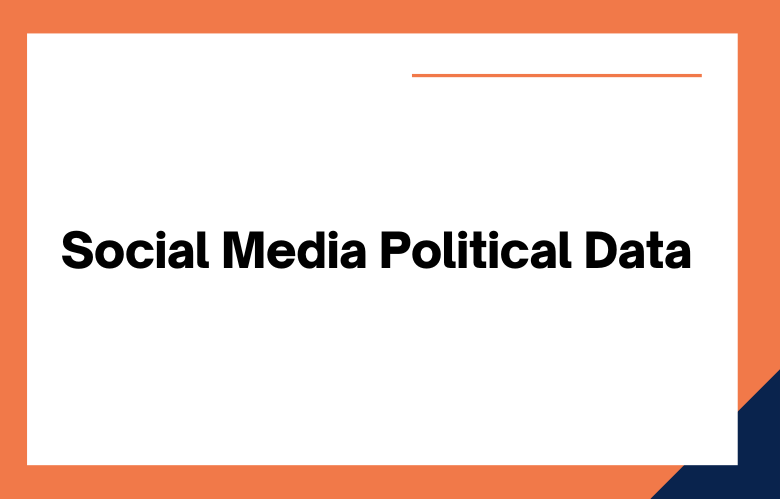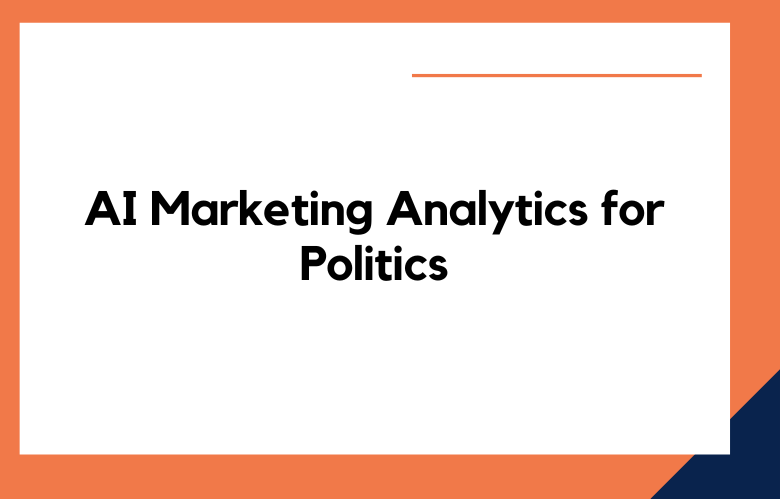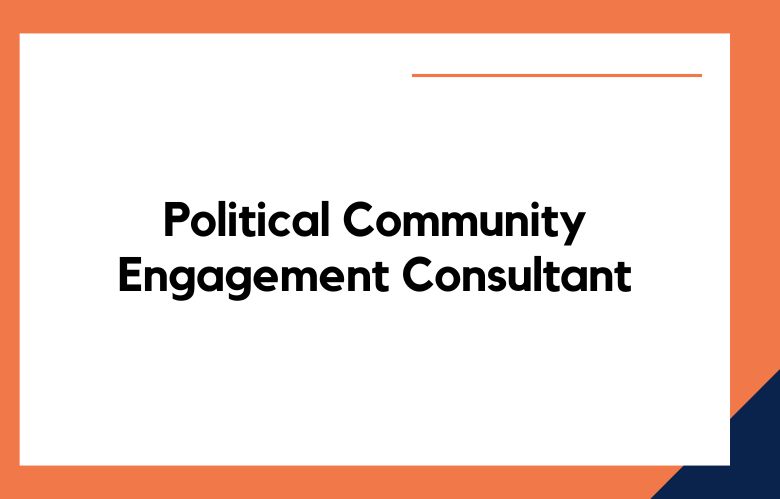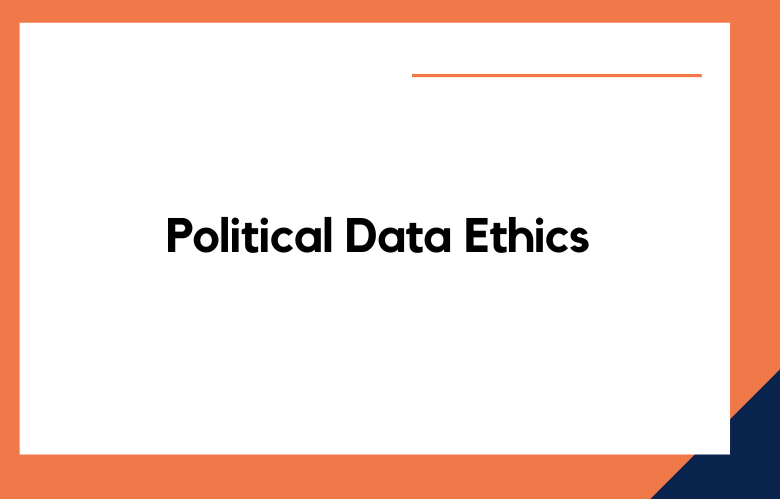As the head of a political campaign, you know data is critical to victory. You also understand that social media is the best place to collect data. But how do you use social media data for your political campaign?
Ways to Use Social Media, Political Data
Know Your Target Audience
The first step is to understand who your target audience is. What are audience demographics? What do they care about? What kind of language do they use? Knowing these things will help you better understand the data you collect from social media.
Collect the correct Data.
Once you know the target audience, you can collect the correct data. Look for demographic information, interests, and opinions. This data will be invaluable in tailoring your campaign messages to resonate with them.
Use the Data wisely
Once you’ve collected the data, it’s essential to use it wisely. That means analyzing and using it to inform your decisions about what messages to send and how to reach your target audience. With social media data, you can fine-tune your campaign for maximum effect.
By following these three tips, you can ensure that you use social media data to its full potential in your political campaign. With the correct data, you can propel your movement to victory.
Create lookalike Audiences on Facebook.
The best practical way to use social media data for political campaigns is to create lookalike audiences on Facebook. Lookalike audiences share characteristics similar to those of your existing supporters.
Facebook uses its vast trove of user data to find these matches, and then you can serve them targeted ads designed to appeal to their interests. It is a compelling way to expand your reach and find new potential voters who will likely support your candidate or campaign.
Target key Demographics with targeted Ads
Another great way to use social media data for political campaigns is to target key demographics with targeted ads. Facebook, Twitter, and
Instagram all have built-in advertising platforms that allow you to target ads based on location, age, gender, interests, and even political affiliation. This means you can specifically target the voters most likely to support your candidate or campaign and serve ads tailored to their interests.
Use Twitter polls
Another great way to use social media data for political campaigns is to use Twitter polls. Twitter polls quickly collect data about people’s opinions on hot-button issues. You can use this data to understand better where people stand on important issues and craft your campaign message accordingly. Twitter polls are the best way to engage people with your campaign and start a conversation about the issues that matter most.
Use data to identify potential donors.
Fundraising is a critical part of any political campaign, and social media data can be instrumental in identifying individuals who may be interested in donating.
Public information, such as job title, employer, location, etc., can be used to narrow down a list of potential donors. Engagement data (likes, comments, shares) can also be used to identify individuals who may be receptive to solicitations.
Use data to craft targeted messages.
Social media provides a way to segment and target specific audiences with tailored messages. For example, suppose you’re targeting swing voters in a particular state. In that case, you can use social media data to hone in on those individuals and craft messages specifically designed to appeal to them.
Use data to track competitor activity.
It’s essential to keep tabs on what your opponents are doing on social media (as well as other digital channels). By tracking their activity, you can better understand what’s working for them and adapt your strategy accordingly. You can also use this information to create negative ads or respond directly to their activity.
Use data for rapid response.
In politics (as in other realms), timing is everything. Social media provides an opportunity for quick responses when necessary—for instance if an opponent makes a blunder or there’s breaking news about an issue relevant to your campaign. You can stay ahead of the competition by being responsive on social media.
Track conversations around critical issues
One of the essential things campaigns can do is track conversations around critical issues. What matters most to voters? What are they saying about the candidates? By monitoring social media, campaigns can get a pulse on what voters care about and adjust their messaging accordingly.
Understand Voter Sentiment
Social media provides a unique opportunity to understand how people feel about the candidates and the issues. Are voters energized or discouraged? Do they see the candidate as a credible leader? What about the opponent? By understanding voter sentiment, campaigns can adjust their strategies to better connect with voters.
Identify new supporters & go where the conversation is
Happening Social media listening can help identify new supporters for a campaign. It can also help direct where resources should be focused. For example, if there’s a lot of conversation on Twitter but not so much on Facebook, it might make sense for the campaign to focus more on Twitter.
Media to identify supporters
One of the best methods of social media political data is identifying supporters. It can do this through direct interactions on social media, such as likes, comments, and shares, or by looking at follower behavior patterns, such as when they’re most active or what content they engage with.
Armed with this information, you can ensure that your campaign reaches its potential supporters and does everything possible to convert them into voters.
Use Social Media to build a dialogue with Voters.
Another great way to use political data from social media is to build a dialogue with voters. It can do this by monitoring conversations about your campaign and engaging with voters directly.
Listening to what voters say about your opponents and other race issues is also essential. Building a dialogue with voters ensures that your campaign is responsive and attentive to constituents’ needs.
Use Social Media to get out the Vote on Election Day.
Finally, one of the most important ways to use social media political data is to get out the vote on election day. They can do this by sending targeted messages to supporters encouraging them to vote and providing information about their polling place.
You can also use social media to give updates on early voting numbers and encourage supporters to spread the word about your campaign.
Use Social Media to understand Your Audience’s preferences and values
The best way to use social media data is to understand your audience’s priorities and values. What issues are they mAudience’sned aboAudience’sind of language do they respond well to?
You can use social media listening tools to track mentions of your campaign and negative and positive Sentiments about critical topics. It will give you a better understanding of what your aAudiencecares about and how they feel about your campaign. MediAudienceft Compelling Messaging that resonates with Your Audience.
You can use that data once you understand what your audience wants from your campaign. Audiencet consulting resonates with them, and when developing your messaging, it’s important to remember what tone and language will work best with your target audience. Once again, social media listening tools can be beneficial.
Use Social Media to make strategic decisions about Your Campaign Strategy.
You can use social media data to make strategic decisions about your campaign strategy.
Identify potential Voters
Social media data can identify voters who may support a particular candidate or issue.
For example, suppose many people discuss a particular issue on social media. This may indicate that they are receptive to hearing more about that issue from a political campaign. Additionally, suppose people frequently share content from a candidate’s campaign website or social media accounts.
In that case, it could indicate that they are interested in that candidate and would be receptive to receiving campaign information from them.
Targeted Advertising
Once potential voters have been identified, campaigns can use social media data to target them with advertising relevant to their interests. For example, if a campaign knows that a potential voter is interested in environmental issues, they can target them with ads highlighting the candidate’s stance on environmental protection.
Get out the Vote
Social media data can also be used to encourage people to vote. For example, suppose a campaign sees that many people in their district must be registered to vote. In that case, they can use social media to direct those individuals to resources where they can write.
Additionally, suppose a campaign knows that many people in their district usually do not vote in primaries. In that case, they can use social media to encourage those individuals to participate in the primary election process.
- Social media can be used to target potential voters.
- Social media can be used to track the opinions of potential voters.
- Social media can be used to engage potential voters in the discussion.
- Social media can be used to solicit donations from potential donors.
- Social media can be used to recruit volunteers for a campaign.
- Social media can be used to coordinate campaign events.
- Social media can be used to disseminate information about a candidate or campaign platform.
- Social media can be used to attack an opponent or their policies.
- Social media can be used to mobilize supporters for get-out-the-vote efforts.
- Social media can be used post-election to thank supporters and donors.
- Social media data can be used to target specific demographics with campaign messaging.
- Social media data can be used to track the Sentiment of potential voters.
- Social media data can be used to gauge the interest of potential voters in specific issues.
- Social media data can be used to identify potential swing voters and undecided voters.
- Social media data can be used to track potential voters’ engagement with the campaign.
- Social media data can be used to monitor the competition and compare messaging strategies.
- Social media data can be used to create targeted ad campaigns for social media platforms.
- Social media data can be used to create targeted content for specific demographics or interest groups.
- Social media data can be used to analyze which platforms are most effective for reaching potential voters and engaging them with the campaign.
- Social media data can provide insights into the overall tone and message of the campaign.
- Social media can be used to target potential voters.
- Social media can be used to track the issues that voters care about.
- Social media can be used to gauge voter sentiment.
- Social media can be used to mobilize voters.
- Social media can be used to fundraise for a campaign.
- Social media can be used to run ads targeting potential voters.
- Social media can be used to get the vote on election day.
- Social media can be used to monitor the competition.
- Social media can be used to track negative Sentiment and address it accordingly.
- Social media can respond to breaking news and events in real time.
- Social media can be used to track the issues that voters care about.
- Social media can be used to identify potential donors.
- Social media can be used to get the vote on election day.
- Social media can be used to track the competition.
- Social media can be used to respond to negative attacks.
- Social media can be used to run ads targeting specific demographics.
- Social media can mobilize volunteers for door-to-door canvassing or other campaign activities.
- Social media can be used to run a virtual campaign headquarters, where supporters can interact with the campaign and each other and learn more about the candidate and the issues.
- Social media can be used to create and distribute campaign materials, including videos, infographics, and blog posts.
- Social media data can be used to identify issues that are important to potential voters.
- Social media data can be used to create targeted ads for potential voters.
- Social media data can be used to monitor the competition.
- Social media data can be used to track campaign progress.
- Social media data can be used to engage with potential voters.
- Social media data can be used to solicit feedback from potential voters.
- Social media data can be used to identify negative Sentiments toward the campaign.
- Social media data can be used to correct misinformation about the campaign.
- Social media data can be used to amplify positive messages about the campaign.
- Social media is a powerful tool for engaging with potential voters and learning about their political views.
- Social media can target specific demographics with campaign ads and messages.
- Social media can be used to track the success of campaign ads and messages.
- Social media can be used to gauge public opinion on issues and candidates.
- Social media can be used to reach potential donors and volunteers.
- Social media can be used to monitor the competition and learn about their strategies.
- Social media can be used to connect with reporters and influencers.
- Social media can be used to live-stream events and rallies.
- Social media can be used to post updates on the campaign’s progress.
- Social media can create a sense of community and connection among supporters.
- Social media can be used to track the opinions of potential voters.
- Social media can be used to target ads at potential voters.
- Social media can be used to mobilize supporters.
- Social media can be used to fundraise.
- Social media can be used to schedule events and rallies.
- Social media can be used to monitor the competition.
- Social media can be used to create campaign slogans and hashtags.
- Social media can be used to release statements and position papers.
- Social media can be used to announce endorsements.
Conclusion
Social media is a powerful tool that political campaigns can use significantly.
By using Lookalike Audiences on Facebook, targeting key demographics with targeted ads, and using Twitter polls, campaigns can collect valuable data about potential voters and tailor their message accordingly.
These strategies will help any campaign reach a wider audience and gain more support.
Social media political data can be beneficial for gaining insights into how the voting public thinks.
It can help you determine your target audience, what issues they care about, and how best to reach them.
Our team of experts can help you incorporate social media political data into your next campaign.
Contact us today for a consultation on how we can use this valuable information to get your candidate elected!
Call: +91 9848321284
Email: [email protected]











